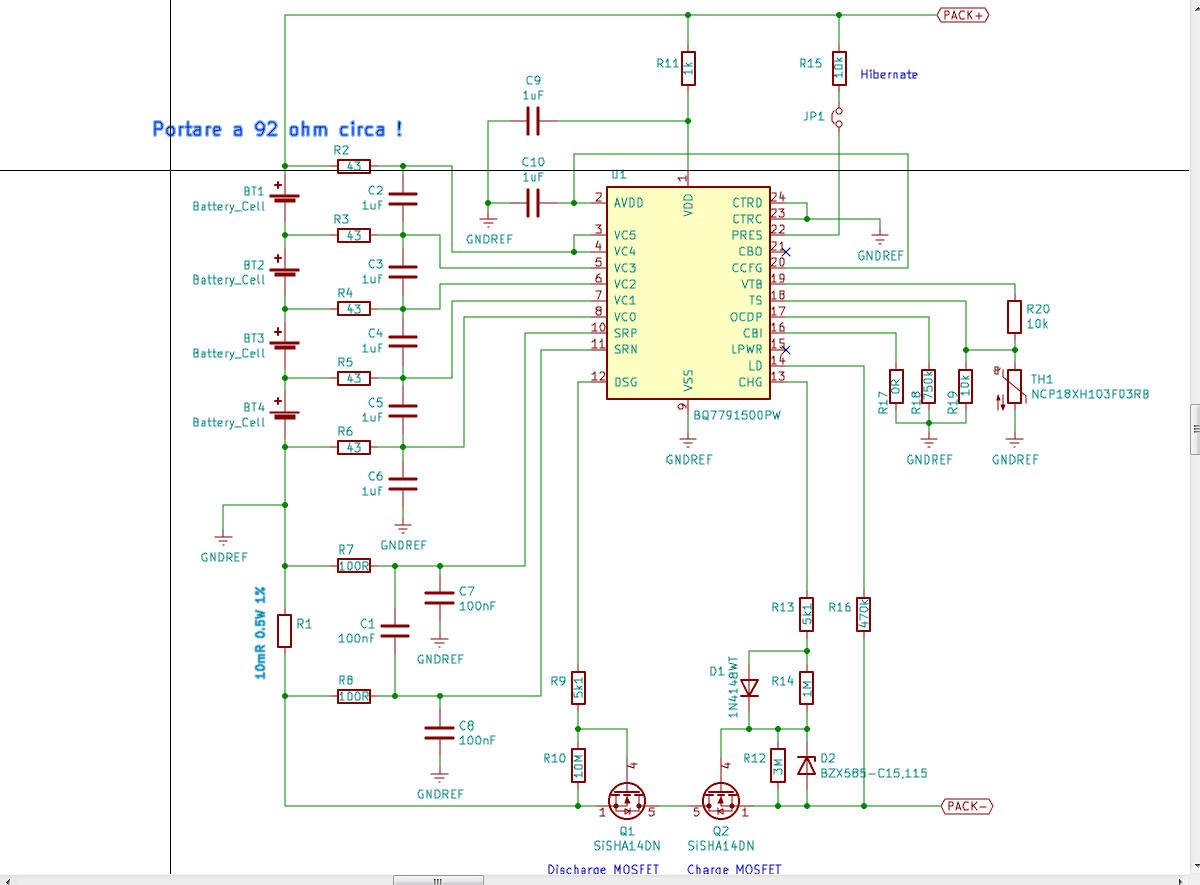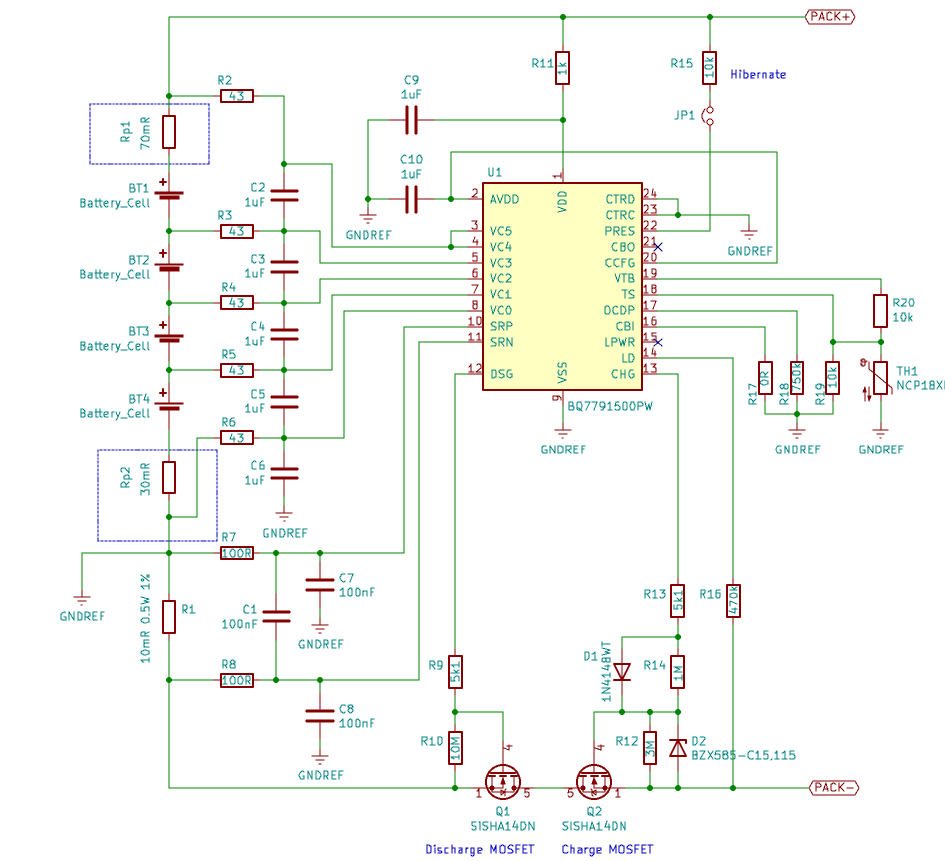Hi, I need help to understand what the BQ77915 is doing .
I have inserted it to protect 4 x 18650 3500mAh batteries. What happens is that charging the batteries in constant current at 2A (both the charge and discharge mosfets are on) and everything seems to work regularly. At a certain voltage of around 3.95 V per cell, the charge mosfet opens and charging stops. After perhaps 2 seconds the mosfet closes and continues to open
close the circuit until the charger gets angry and signals the fault.
At the beginning I thought it was cell balancing that interfered and then I disabled it but nothing changes.
t would seem an overvoltage but theoretically it occurs at 4.2V, it is not an overcurrent because I measured the voltage on Rsense and is 20 mV, well below the 60mV of overcurrent detection.
To be on the safe side, I replaced the thermistor with a 10Kohm resistor in order to disable the thermal protection but this also does not solve the problem.
The only thing I noticed tonight is that the chip ordered by digikey in order to mount these 2 prototypes brings back in the container bag BQ7791500 but the chip is marked as
BQ77915
(Ti logo) 89K G4
C3LZ
I checked on the datasheets but I can't find a hypothetical version 89, only 01, 02, 03, 04
What version of chip am I using?
-
Ask a related question
What is a related question?A related question is a question created from another question. When the related question is created, it will be automatically linked to the original question.



